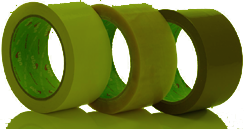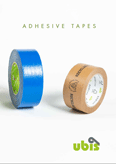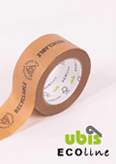
Term Glossary
-
Adhesion
Tendency of different particles or surfaces to attach to one another. On Pressure sensitive adhesive tapes, adhesion is measured pulling a tape specimen from a stainless steel plate at a constant speed (normally 300 mm/min) and in a certain temperature range (normally 21 to 23ºC) Result is given normally in Newton per each specimen cm.
-
AFERA
Association des Fabricants Europeans de Rubans Auto-Adhesifs (The European Association for the Self Adhesive Industry) is a representative group for the industry.
-
Application Temperature
Pressure sensitive adhesives are sensitive to temperature and, as they cool, they lose their initial tack. It is necessary that an adhesive is able to wet-out and form an intimate bond with the underlying substrate when the pressure is applied. Thus, most pressure sensitive adhesives are recommended to be applied at moderate temperatures as 15° - 25° C. However, once a bond has been formed, their operating temperature range will be far wider, dependent on their construction and adhesive type.
-
ASTM
American Society for Testing Materials is an independent group determining standards for industry.
-
Backing and Carrier
· BACKING: Material onto which the adhesive is coated.
· LINER: For double sided tapes means the release liner or commonly siliconised paper to be removed when using the double sided tape.
· CARRIER: When referring to double sided tapes this is the medium onto which the adhesive is coated. Intermediate material between adhesive sides. Commonly BOPP, polyester net, cloth, paper etc. -
Clean Removal
Property that allows removing a tape from the surface where it has been applied. If the tape is being used for some form of temporary application, then it may be desirable for it to clean remove from the applied surface. For a tape to clean remove the adhesive needs to be better bonded to its carrier than it does to the bonding surface and the carrier to have greater structural strength than the bond strength. Temporary bonds require an adhesive to have good cohesive strength but only moderate adhesive strength.
-
Coating Weight
Mass of adhesive applied to a unit of area. It may also be referred to as Adhesive Mass or Mass Weight and is normally expressed in grams per square metre (gsm).
-
Cohesión – Static Shear Adhesion
Refers to the tendency of similar or identical particles or surfaces to attach to one another. This test gives a good measure of the resistance of a tape to slippage or creep when a static load is applied. On PSA tapes, cohesion or shear adhesion is measured by hanging a weight on a tape specimen that has been applied to a certain surface (steel, paper etc.) of 25 x 25 mm. This weight reproduces a force pulling down the tape on a parallel direction to the surface where it has been applied. Time is recorded to failure at a constant temperature. Either at room temperature or higher one in a specific oven.
-
FINAT
Federation Internationale des Fabricants et Transformateurs d'Adhesifs (The International Association for Self-Adhesive Labels & Related Products) a representative group for the industry.
-
Fisheyes
Small circles on the adhesive's surface caused by air being trapped between the adhesive and the next layer of tape or from the evaporation of solvent during drying of the tape. This effect tends to diminish with ageing and it does not signify any defect or coating lack in the tape.
-
Hand Tearable
Depending on the tape application, it can be an important feature that it can be easily and cleanly torn by hand. The ease with which a tape can be torn is a function of the release liner and the adhesive's carrier. Whilst certain tapes such as foams are easily torn they do not usually tear cleanly by hand for different reasons. Special slitting blades can be used on the roll slitting step to provide a tape such hand tearable characteristic.
-
Heat Resistance
The ability of a tape to retain its cohesive strength under increased temperature.
-
Holding Power
This is the ability of a tape to withstand adhesive slippage under shear stress. It is measured using a static shear test where a fixed area of tape is used to suspend a fixed weight in the vertical. The test runs either at room temperature or in an oven at higher temperatures (50ºC). The measure is the time taken for the bond to fail.
-
Hot Melt Adhesive Tapes
Adhesive tape coated with an adhesive that is produced by heating it to a temperature where it flows. When applying it onto a carrier it gets cooled down forming a conventional pressure sensitive adhesive tape. Hot melts are synthetic rubber based adhesive systems.
-
Initial Tack
This term relates to the quick stick characteristics of the adhesive. It is an indicator of how easily a tape will form an initial bond with a surface. The initial tack of the adhesive tape is a function of the type of adhesive, its coat weight and the carrier. The nature of the product's initial tack will have implications for other characteristics.
-
Jumbo
This is the bulk form that tape is normally stored in when it comes off the coating line, the width is dependent on the size of the base materials and the width of the coating heads. The length is largely determined by the gauge and density of the tape. Jumbos can be converted directly into rolls of tape by a slit rewind process or else logged to shorter lengths and then late slit.
-
Log
This is the tape in the required length at full width and is created from rewinding the jumbo to the required length on a logging-rewinder machine. Logs can then be slit to the required width to create a roll of tape.
-
Machine Direction
This is the direction parallel to the unwind direction of the reel, as opposed to cross direction.
-
Material Safety Data Sheet (MSDS)
Document produced by the manufacturer that details information of a product's potential hazards and how they are to be reacted to or treated.
-
Natural Rubber
Natural polymer obtained from latex rubber trees. Is a key ingredient of many pressure sensitive adhesives. Inside the adhesive it gives the shear strength and also both tack and adhesive properties.
-
Non-woven Material
These are backings, either tissue paper or synthetic, where the fibers are randomly orientated and are bonded to each other either by pressure or some resinous material. They are widely used as carriers for double sided tapes.
-
Off-setting
· Adhesive off-setting: This is where adhesive residue is left on the uncoated surface of the tape when unwinding it. It can be caused by a number of issues such as: poor release coat, over age tape or application at high temperature causing the tape to leg and offset.
· Ink off-setting: This is where ink residue is left on the adhesive surface of the tape when unwinding a printed tape roll. It can be caused by a number of issues such as: poor release efficiency of the ink, or not enough drying of the ink during the printing process. -
Operational Temperature
It is the temperature range at which the bond strength between the adhesive and the substrate should maintain its integrity. This should not be confused with the application temperature.
-
Peel Adhesion
This is the force required to peel a strip of tape of a specified width from a specified surface at a specified angle (90° or 180° degrees) and at a specified speed (commonly 300mm/minute). The force required is normally expressed in Newtons per Centimetre: N/cm. This is the test that is most commonly used for comparing different adhesives and gives a useful common reference.
-
Pressure Sensitive
This is the term used to define adhesives that are able to wet-out and form a bond with a substrate, when they are applied with certain force to an underlying substrate. The amount of force required will be dependent on a wide range of variables such as: the adhesive nature, the adhesive coating weight, the ambient temperature, the surface type and substrate nature to which the tape is being applied.
-
Primer
A coating applied on the internal side of the carrier prior to apply the adhesive layer. A primer acts as a link between the carrier and the adhesive applied on the top of it. Used mainly in solvent base tapes in order to make compatible both the adhesive and the carrier.
-
Printable Tape
On BOPP tapes it is an adhesive tape produced with a directly printable release coat. It must have a double function working one against the other. On one hand it must be able to retain the ink that is applied on the printing process and on the other hand it must release the adhesive coat. PVC tapes are directly printable with adequate vinyl inks. No release is required in this case on the top of the tape. Naked PVC is directly printable on a easy way.
-
PSTC
Pressure Sensitive Tape Council (USA) a representative group for the industry in the USA.
-
Release Coating
This is a coating applied to the external side of the tape to allow the tape to unwind. Thus, the adhesive will release the external side and be correctly unwinded. Without this process the tape might not be able to unwind without serious off-setting.
-
Release Liner
Release liners are common to all double sided tapes and can be made from a variety of materials. Most commonly they are paper based and are coated with silicon or some other low energy coating that means that the pressure sensitive adhesive will release from them when required. Release liners have a differential release so that when one unwinds the tape the adhesive will consistently stay on one side of the release liner and not offset. The liner is normally on the outside of the roll to protect the adhesive layer and allow easy application to a surface. Although discarded, the release liner can form a very significant part of the overall cost of the tape.
-
Resin
A component of many adhesives that will confer tackiness and improved adhesion to the mix, there are both natural and synthetic resins that get used in the manufacture of adhesives.
-
Rubber Adhesives
They might be of different types:
· Synthetic rubber adhesives(manufactured).
· Natural rubber adhesive (latex from rubber trees).
These two types of elastomers form the basic building block for an adhesive, to which are added, tackifiers or resins to improve the tack. Other components that are commonly used in an adhesive system are plasticizers, fillers, pigments, curing agents and anti-oxidants. -
Shear Adhesion Failure Temperature (SAFT)
This is a test that measures the cohesive strength of an adhesive when subjected to temperature. It is measured by increasing the temperature once a fixed weight is supported by the tape on the same way as explained in cohesion or static shear test. Once the bond fails at certain temperature, this is the SAFT temperature for the tape.
-
Shelf Life
It is the period that one adhesive tape roll can be stored normally under set conditions and still remain suitable for its intended application. To maximize shelf life of any tape, the material should be retained in sealed bags and cartons and not subjected to fluctuations or extremes of temperature.
-
Solvent
It is a liquid used to dissolve the adhesive and turn into a fluid form so that it can be pumped, processed and applied onto the carrier to form an homogeneous layer. The solvent is then evaporated off to leave the adhesive fixed to its carrier. The solvent may be water in case of certain water acrylic systems. However hydrocarbons are widely used to dissolve adhesives and these tend to give better performing and more expensive adhesives.
-
Specification
This is a document that details tape's physical characteristics, indicative performance results, its intended applications and basic guidelines for application.
The data often only shows averages and does not advise manufacturer's tolerance or many other facts. A Specification produced by a manufacturer for a product does not represent a guarantee and will not normally have been audited by any third party. Where results for performance characteristics are given the test method used should be detailed alongside. -
Splice
A join in the tape that may occur on different production steps. It may occur when the tape is produced in the big jumbo roll bulk form. It occurs always across the entire coat width of a product. It may occur also when slitting the jumbos onto hand rolls and they do not represent any performing difference of the tape.
-
Spool
This is a long length tape that is helically wound, like a yarn on a bobbin, onto a large core to create a long length of tape for machine applications. Depending on the tape and its width very long lengths can be achieved.
-
Tack
Term used to describe the ease with which a pressure sensitive tape wets out and forms a bond with a substrate under minimal application pressure. The term quick stick is also sometimes used to describe this characteristic. Generally the softer an adhesive is, the better its tack but the poorer its cohesive or internal strength.
-
Adhesion
Tendency of different particles or surfaces to attach to one another. On Pressure sensitive adhesive tapes, adhesion is measured pulling a tape specimen from a stainless steel plate at a constant speed (normally 300 mm/min) and in a certain temperature range (normally 21 to 23ºC) Result is given normally in Newton per each specimen cm.
-
AFERA
Association des Fabricants Europeans de Rubans Auto-Adhesifs (The European Association for the Self Adhesive Industry) is a representative group for the industry.
-
Application Temperature
Pressure sensitive adhesives are sensitive to temperature and, as they cool, they lose their initial tack. It is necessary that an adhesive is able to wet-out and form an intimate bond with the underlying substrate when the pressure is applied. Thus, most pressure sensitive adhesives are recommended to be applied at moderate temperatures as 15° - 25° C. However, once a bond has been formed, their operating temperature range will be far wider, dependent on their construction and adhesive type.
-
ASTM
American Society for Testing Materials is an independent group determining standards for industry.
-
Backing and Carrier
· BACKING: Material onto which the adhesive is coated.
· LINER: For double sided tapes means the release liner or commonly siliconised paper to be removed when using the double sided tape.
· CARRIER: When referring to double sided tapes this is the medium onto which the adhesive is coated. Intermediate material between adhesive sides. Commonly BOPP, polyester net, cloth, paper etc. -
Clean Removal
Property that allows removing a tape from the surface where it has been applied. If the tape is being used for some form of temporary application, then it may be desirable for it to clean remove from the applied surface. For a tape to clean remove the adhesive needs to be better bonded to its carrier than it does to the bonding surface and the carrier to have greater structural strength than the bond strength. Temporary bonds require an adhesive to have good cohesive strength but only moderate adhesive strength.
-
Coating Weight
Mass of adhesive applied to a unit of area. It may also be referred to as Adhesive Mass or Mass Weight and is normally expressed in grams per square metre (gsm).
-
Cohesión – Static Shear Adhesion
Refers to the tendency of similar or identical particles or surfaces to attach to one another. This test gives a good measure of the resistance of a tape to slippage or creep when a static load is applied. On PSA tapes, cohesion or shear adhesion is measured by hanging a weight on a tape specimen that has been applied to a certain surface (steel, paper etc.) of 25 x 25 mm. This weight reproduces a force pulling down the tape on a parallel direction to the surface where it has been applied. Time is recorded to failure at a constant temperature. Either at room temperature or higher one in a specific oven.
-
FINAT
Federation Internationale des Fabricants et Transformateurs d'Adhesifs (The International Association for Self-Adhesive Labels & Related Products) a representative group for the industry.
-
Fisheyes
Small circles on the adhesive's surface caused by air being trapped between the adhesive and the next layer of tape or from the evaporation of solvent during drying of the tape. This effect tends to diminish with ageing and it does not signify any defect or coating lack in the tape.
-
Hand Tearable
Depending on the tape application, it can be an important feature that it can be easily and cleanly torn by hand. The ease with which a tape can be torn is a function of the release liner and the adhesive's carrier. Whilst certain tapes such as foams are easily torn they do not usually tear cleanly by hand for different reasons. Special slitting blades can be used on the roll slitting step to provide a tape such hand tearable characteristic.
-
Heat Resistance
The ability of a tape to retain its cohesive strength under increased temperature.
-
Holding Power
This is the ability of a tape to withstand adhesive slippage under shear stress. It is measured using a static shear test where a fixed area of tape is used to suspend a fixed weight in the vertical. The test runs either at room temperature or in an oven at higher temperatures (50ºC). The measure is the time taken for the bond to fail.
-
Hot Melt Adhesive Tapes
Adhesive tape coated with an adhesive that is produced by heating it to a temperature where it flows. When applying it onto a carrier it gets cooled down forming a conventional pressure sensitive adhesive tape. Hot melts are synthetic rubber based adhesive systems.
-
Initial Tack
This term relates to the quick stick characteristics of the adhesive. It is an indicator of how easily a tape will form an initial bond with a surface. The initial tack of the adhesive tape is a function of the type of adhesive, its coat weight and the carrier. The nature of the product's initial tack will have implications for other characteristics.
-
Jumbo
This is the bulk form that tape is normally stored in when it comes off the coating line, the width is dependent on the size of the base materials and the width of the coating heads. The length is largely determined by the gauge and density of the tape. Jumbos can be converted directly into rolls of tape by a slit rewind process or else logged to shorter lengths and then late slit.
-
Log
This is the tape in the required length at full width and is created from rewinding the jumbo to the required length on a logging-rewinder machine. Logs can then be slit to the required width to create a roll of tape.
-
Machine Direction
This is the direction parallel to the unwind direction of the reel, as opposed to cross direction.
-
Material Safety Data Sheet (MSDS)
Document produced by the manufacturer that details information of a product's potential hazards and how they are to be reacted to or treated.
-
Natural Rubber
Natural polymer obtained from latex rubber trees. Is a key ingredient of many pressure sensitive adhesives. Inside the adhesive it gives the shear strength and also both tack and adhesive properties.
-
Non-woven Material
These are backings, either tissue paper or synthetic, where the fibers are randomly orientated and are bonded to each other either by pressure or some resinous material. They are widely used as carriers for double sided tapes.
-
Off-setting
· Adhesive off-setting: This is where adhesive residue is left on the uncoated surface of the tape when unwinding it. It can be caused by a number of issues such as: poor release coat, over age tape or application at high temperature causing the tape to leg and offset.
· Ink off-setting: This is where ink residue is left on the adhesive surface of the tape when unwinding a printed tape roll. It can be caused by a number of issues such as: poor release efficiency of the ink, or not enough drying of the ink during the printing process. -
Operational Temperature
It is the temperature range at which the bond strength between the adhesive and the substrate should maintain its integrity. This should not be confused with the application temperature.
-
Peel Adhesion
This is the force required to peel a strip of tape of a specified width from a specified surface at a specified angle (90° or 180° degrees) and at a specified speed (commonly 300mm/minute). The force required is normally expressed in Newtons per Centimetre: N/cm. This is the test that is most commonly used for comparing different adhesives and gives a useful common reference.
-
Pressure Sensitive
This is the term used to define adhesives that are able to wet-out and form a bond with a substrate, when they are applied with certain force to an underlying substrate. The amount of force required will be dependent on a wide range of variables such as: the adhesive nature, the adhesive coating weight, the ambient temperature, the surface type and substrate nature to which the tape is being applied.
-
Primer
A coating applied on the internal side of the carrier prior to apply the adhesive layer. A primer acts as a link between the carrier and the adhesive applied on the top of it. Used mainly in solvent base tapes in order to make compatible both the adhesive and the carrier.
-
Printable Tape
On BOPP tapes it is an adhesive tape produced with a directly printable release coat. It must have a double function working one against the other. On one hand it must be able to retain the ink that is applied on the printing process and on the other hand it must release the adhesive coat. PVC tapes are directly printable with adequate vinyl inks. No release is required in this case on the top of the tape. Naked PVC is directly printable on a easy way.
-
PSTC
Pressure Sensitive Tape Council (USA) a representative group for the industry in the USA.
-
Release Coating
This is a coating applied to the external side of the tape to allow the tape to unwind. Thus, the adhesive will release the external side and be correctly unwinded. Without this process the tape might not be able to unwind without serious off-setting.
-
Release Liner
Release liners are common to all double sided tapes and can be made from a variety of materials. Most commonly they are paper based and are coated with silicon or some other low energy coating that means that the pressure sensitive adhesive will release from them when required. Release liners have a differential release so that when one unwinds the tape the adhesive will consistently stay on one side of the release liner and not offset. The liner is normally on the outside of the roll to protect the adhesive layer and allow easy application to a surface. Although discarded, the release liner can form a very significant part of the overall cost of the tape.
-
Resin
A component of many adhesives that will confer tackiness and improved adhesion to the mix, there are both natural and synthetic resins that get used in the manufacture of adhesives.
-
Rubber Adhesives
They might be of different types:
· Synthetic rubber adhesives(manufactured).
· Natural rubber adhesive (latex from rubber trees).
These two types of elastomers form the basic building block for an adhesive, to which are added, tackifiers or resins to improve the tack. Other components that are commonly used in an adhesive system are plasticizers, fillers, pigments, curing agents and anti-oxidants. -
Shear Adhesion Failure Temperature (SAFT)
This is a test that measures the cohesive strength of an adhesive when subjected to temperature. It is measured by increasing the temperature once a fixed weight is supported by the tape on the same way as explained in cohesion or static shear test. Once the bond fails at certain temperature, this is the SAFT temperature for the tape.
-
Shelf Life
It is the period that one adhesive tape roll can be stored normally under set conditions and still remain suitable for its intended application. To maximize shelf life of any tape, the material should be retained in sealed bags and cartons and not subjected to fluctuations or extremes of temperature.
-
Solvent
It is a liquid used to dissolve the adhesive and turn into a fluid form so that it can be pumped, processed and applied onto the carrier to form an homogeneous layer. The solvent is then evaporated off to leave the adhesive fixed to its carrier. The solvent may be water in case of certain water acrylic systems. However hydrocarbons are widely used to dissolve adhesives and these tend to give better performing and more expensive adhesives.
-
Specification
This is a document that details tape's physical characteristics, indicative performance results, its intended applications and basic guidelines for application.
The data often only shows averages and does not advise manufacturer's tolerance or many other facts. A Specification produced by a manufacturer for a product does not represent a guarantee and will not normally have been audited by any third party. Where results for performance characteristics are given the test method used should be detailed alongside. -
Splice
A join in the tape that may occur on different production steps. It may occur when the tape is produced in the big jumbo roll bulk form. It occurs always across the entire coat width of a product. It may occur also when slitting the jumbos onto hand rolls and they do not represent any performing difference of the tape.
-
Spool
This is a long length tape that is helically wound, like a yarn on a bobbin, onto a large core to create a long length of tape for machine applications. Depending on the tape and its width very long lengths can be achieved.
-
Tack
Term used to describe the ease with which a pressure sensitive tape wets out and forms a bond with a substrate under minimal application pressure. The term quick stick is also sometimes used to describe this characteristic. Generally the softer an adhesive is, the better its tack but the poorer its cohesive or internal strength.
- © ubis 2025
- home
- Company
- Products
- News
- Contact
- Legal Notice
- Whistleblower channel
- Web Design











